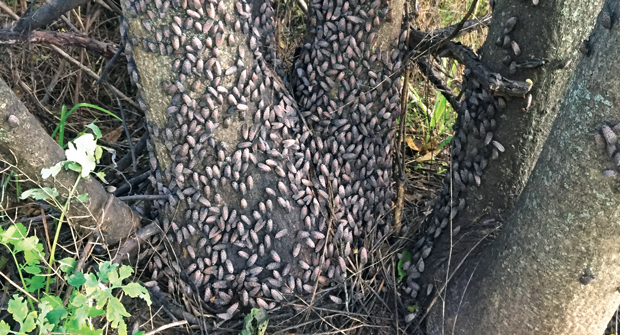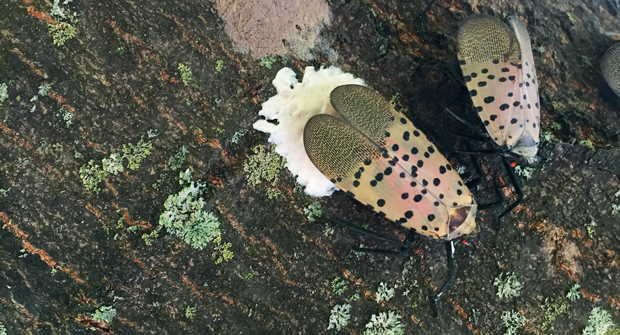
Spotted lanternfly has been in the news lately for its threat to agricultural commodities. In terms of the spotted lanternfly’s threat to turf and ornamental plantings, experts say it’s more of a nuisance. So far, spotted lanternfly has been found in the Mid-Atlantic region and some Midwestern states.
When lanternflies feed, the adults secrete a sticky substance called honeydew. This honeydew, aside from being messy, can attract yellow jackets and other stinging insects. Sooty mold is also present in areas of large spotted lanternfly populations, and sometimes, a distinguishable smell comes along with the spotted lanternfly feeding.
“This really sour smell develops, and it has to do with the microbes that are present because of all the honeydew,” says Emelie Swackhamer, Penn State Extension horticulture educator. “It can really stink.”

The spotted lanternfly feeds on a myriad of plants and weeds, such as tree of heaven, Oriental bittersweet, wild grape, walnut, Styrax, Evodia, river birch, willow, Staghorn sumac and red and silver maple trees.
“Landscape managers that work with high-value ornamental trees want to be monitoring those trees,” she says. “We want landscape managers to understand and help their customers know that we don’t expect the spotted lanternfly to kill a lot of landscape trees.”
Swackhamer says landscape managers need to use integrated pest management practices, which may include using chemical controls based on the population numbers and the value of the trees threatened. There also needs to be an expectation that treatments are not eradications as lanternfly populations often congregate in forested and wild areas on properties, she says. Expect fluctuations in populations, too, as these pests move into new areas, much like gypsy moths.

“There is no one-size-fits-all program for spotted lanternfly management,” she says, noting many turf pests and diseases have standard treatment programs.
Swackhamer says the first line of defense against new populations should be trapping and scouting for eggs and the pest itself. She recommends circle traps because sticky bands can catch other insects, birds or animals. Swackhamer says landscape professionals can help slow the pest’s spread through trapping and communicating to customers about its threat.

